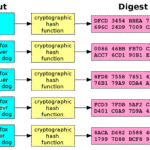Elliptic curves have long fascinated mathematicians and cryptographers, but they hold a unique significance when viewed through a Christian lens. Among the intricate features of these mathematical structures lies the concept of the ‘infinity point’, a notion that evokes profound spiritual imagery and metaphysical inquiry. This article explores what the infinity point represents in elliptic curves, emphasizing its metaphorical implications within a Christian context.
To commence, it is vital to understand what elliptic curves are. In mathematics, an elliptic curve is defined as a smooth, projective algebraic curve of genus one, equipped with a specified point at infinity. This curve is typically expressed in the form of an equation, such as y² = x³ + ax + b. The significance of the infinity point manifests itself clearly in this context. It acts as a kind of intersection, a nexus transcending the confines of the finite realm.
From a Christian perspective, this infinity point can be likened to the concept of God as the Alpha and Omega, the beginning and the end. The infinity point is where the tangible intersects with the transcendent; it is akin to the divine presence that envelops the earthly realm. Just as the infinity point serves as a reference for the elliptic curve, God remains a constant point of reference for believers navigating the complexities of life.
Intriguingly, the infinity point symbolizes hope and eternity, ideals deeply embedded in Christian theology. When Christians contemplate eternity, they envision a time without the limitations of the earthly existence—a continuum that echoes the concept of the infinity point. As the curve approaches this point, it reflects the idea that human existence is a journey toward a divine destination, a pilgrimage toward an everlasting communion with the Divine. Here, elliptic curves etch an intricate tapestry of faith, promising a future that transcends mortal understanding.
Moreover, the mathematical properties intrinsic to elliptic curves extend the metaphor further. Addition operations on points on these curves signify profound connections and relationships—much like the Christian doctrine of community and fellowship. When two finite points on an elliptic curve are added, the line connecting them inevitably intersects the curve at a third point, which is then reflected over the x-axis to produce a new point. This mirrors the Christian teaching of unity in diversity, implying that while individual believers may lead distinct lives, they find their true essence in communion with God and one another.
Furthermore, the journey toward the infinity point infers an upward trajectory—an ascension toward the divine. In a world often riddled with chaos and disillusionment, the infinity point becomes a beacon of hope. The metaphorical essence of striving toward something greater resonates deeply with the Christian aspiration for sanctification and eternal life. This ambivalence reminds believers that they are perpetually on a quest, even amid life’s tribulations.
The space surrounding the infinity point, intriguingly, can also prompt reflection on the concept of grace. The way this point emerges outside the traditional Cartesian coordinates indicates the omnipresent nature of grace in a Christian’s life. Grace, much like the infinity point, subsists outside of human understanding yet manifests within the personal narratives of believers. It embodies the idea that divine benevolence transcends human limitations, much like how the curve intertwines with the infinitely distant point beyond conventional space-time.
This intriguing connection between mathematical theory and spiritual contemplation leads to a deeper understanding of faith. It provokes thought regarding the limits of human knowledge. Just as mathematicians grapple with concepts that often perplex comprehension, believers engage with mysteries of faith that defy logical reasoning. Each represents a domain in which one’s journey requires navigating complexities, often through trust and surrender to a greater power.
Moreover, viewing the infinity point through a Christian paradigm allows for layers of introspection, bridging the gap between the empirical and the esoteric. It suggests a journey not merely to an endpoint but toward continuous nourishment—a learning experience that perpetuates growth and transformation. The infinity point symbolizes the notion that one’s relationship with God is not a destination but an evolving reality, a dance along the curves of faith and existence.
As we contemplate the implications of the infinity point within elliptic curves, we can appreciate how these mathematical constructs are intertwined with timeless spiritual truths. They inspire believers to reflect on their own paths toward the divine, encouraging an understanding of life as an ongoing dialogue between human experience and sacred transcendence. The interplay of elements like hope, grace, community, and the eternal invites a rich tapestry of theological reflection, ultimately leading to a more profound engagement with the philosophical and spiritual narratives that define human existence.
In essence, the infinity point in elliptic curves serves as more than a mathematical abstraction; it evolves into a metaphor overflowing with Christian significance. This perspective not only enriches the understanding of elliptic curves but also illuminates the ways in which mathematics and spirituality can converge, creating a harmonious synergy that invites further exploration and contemplation in both fields.









Leave a Comment